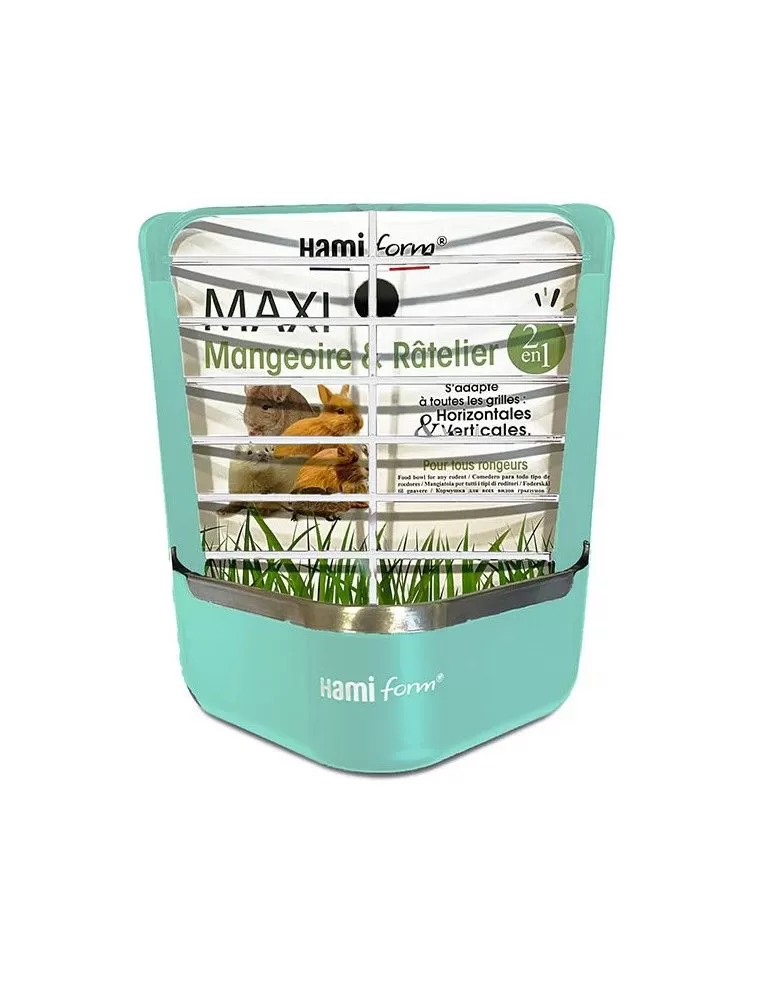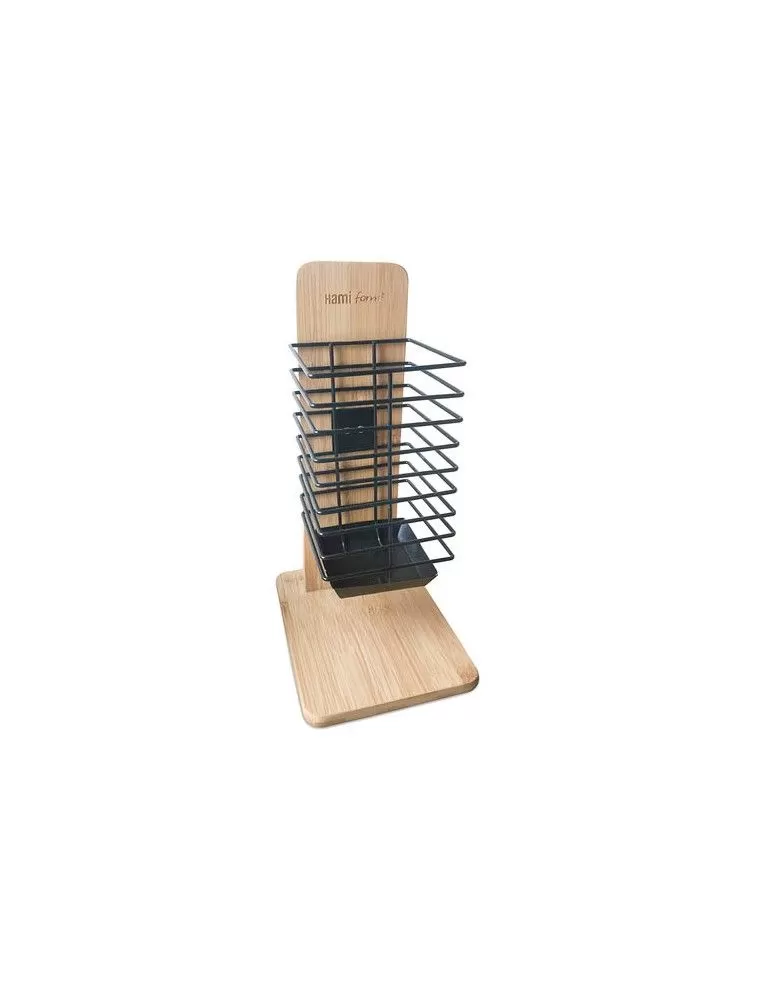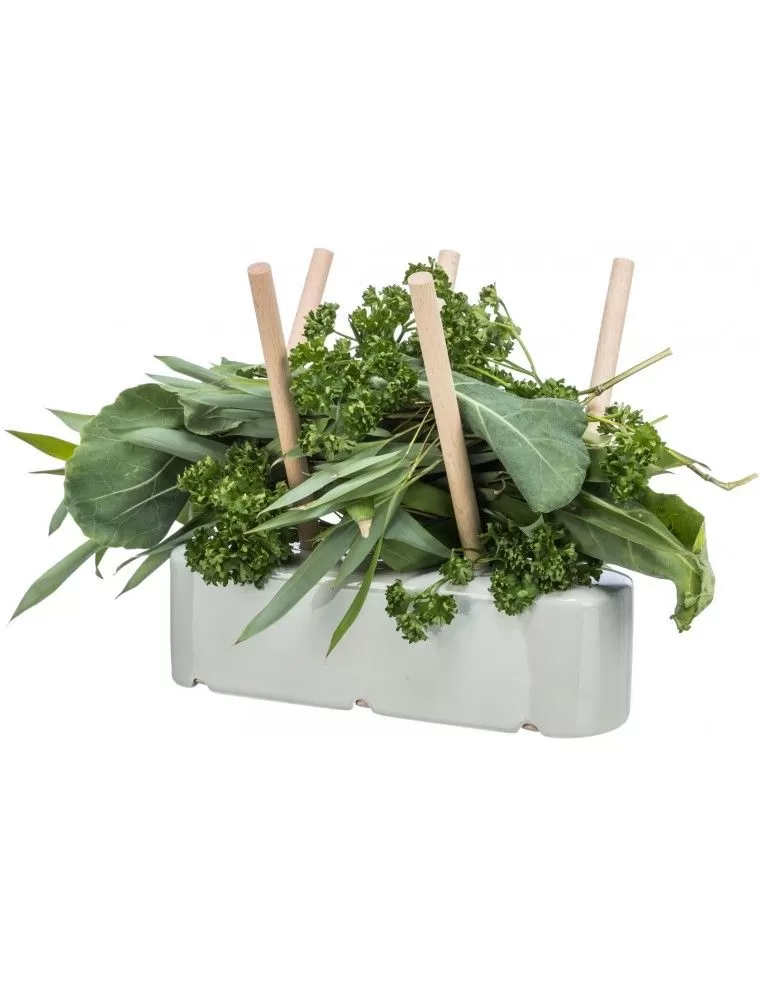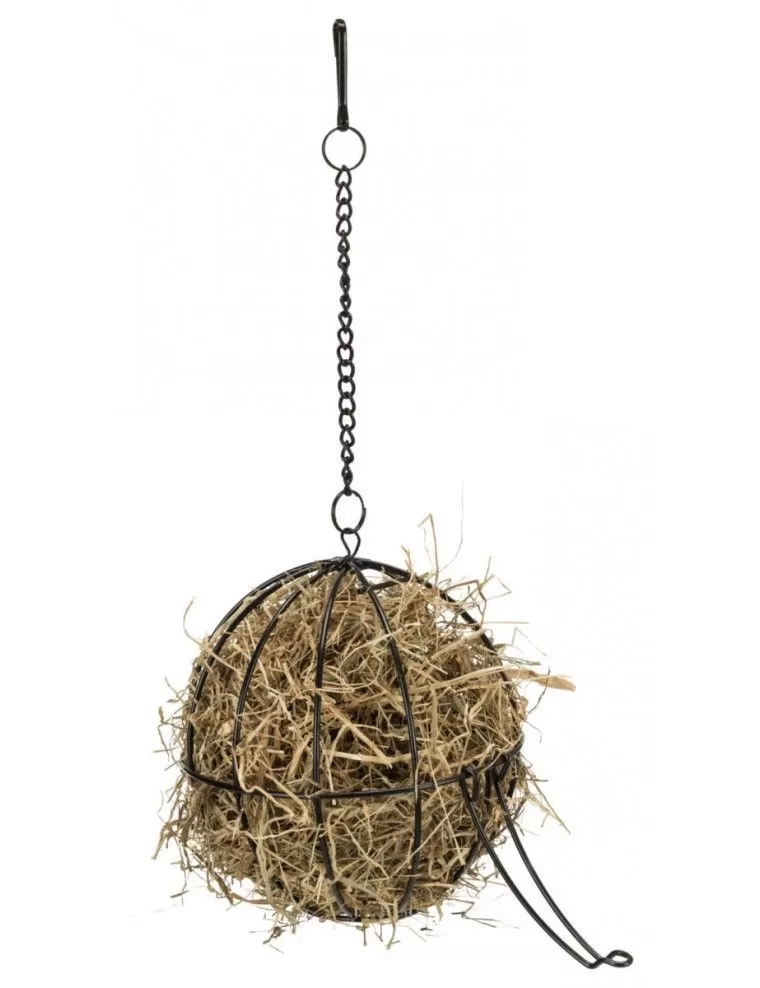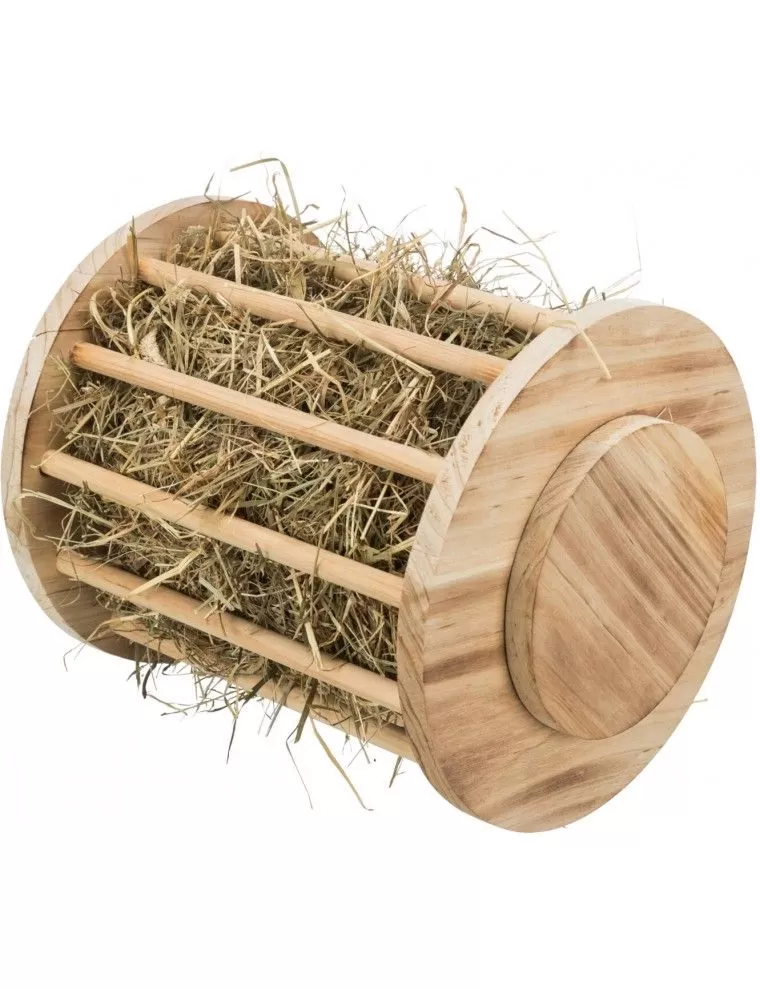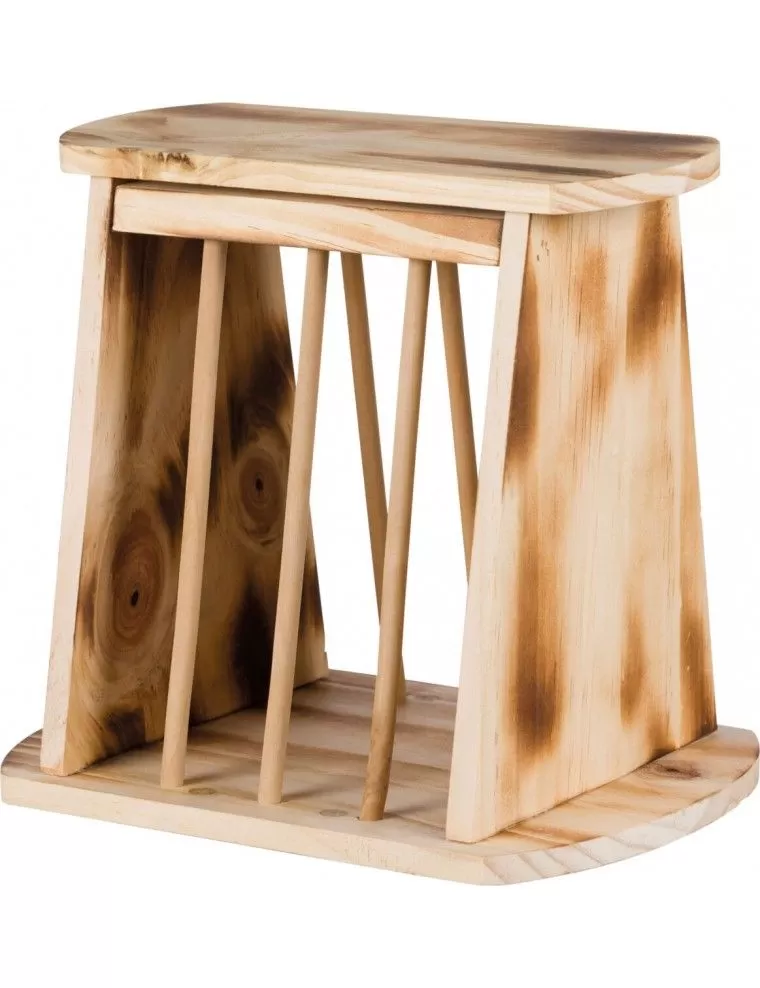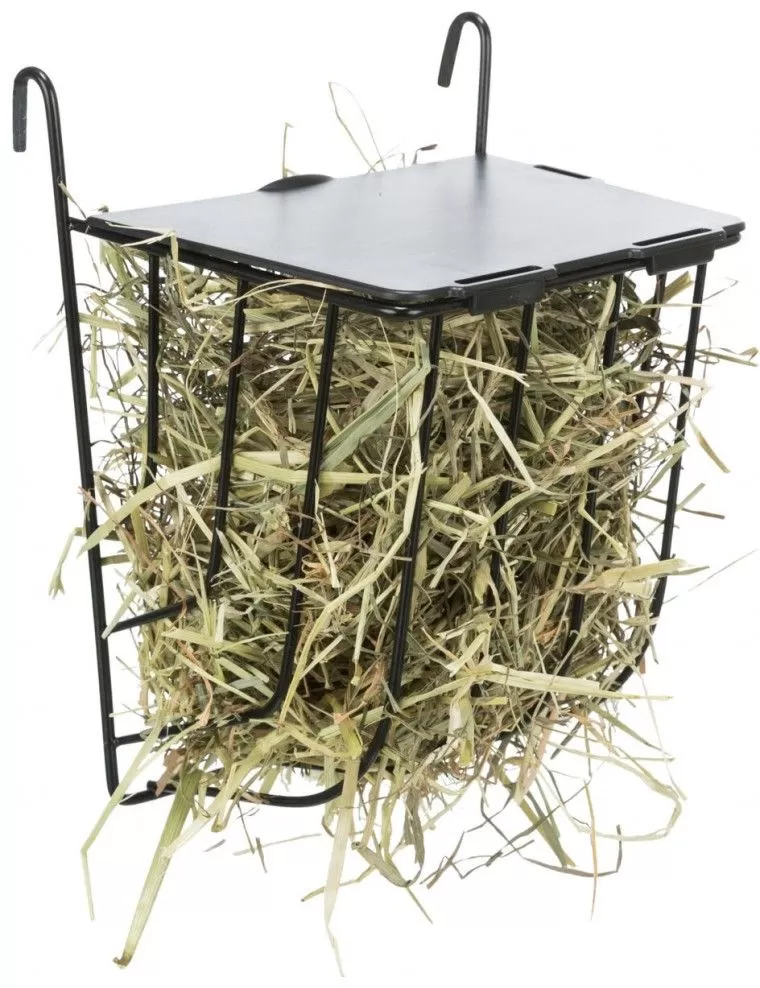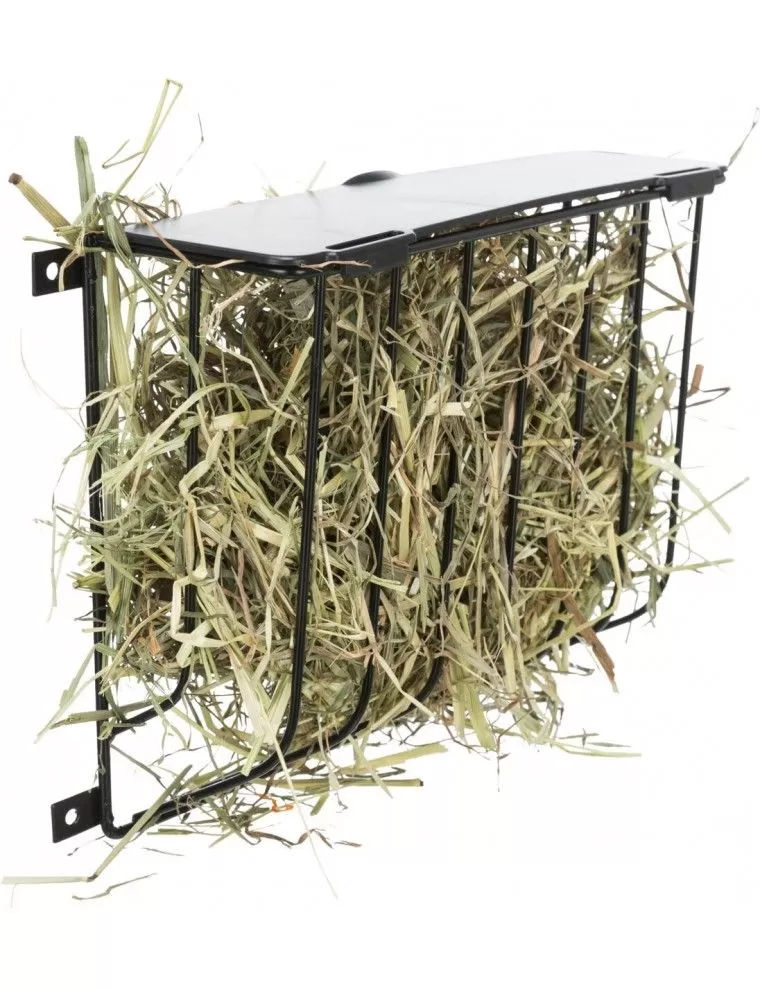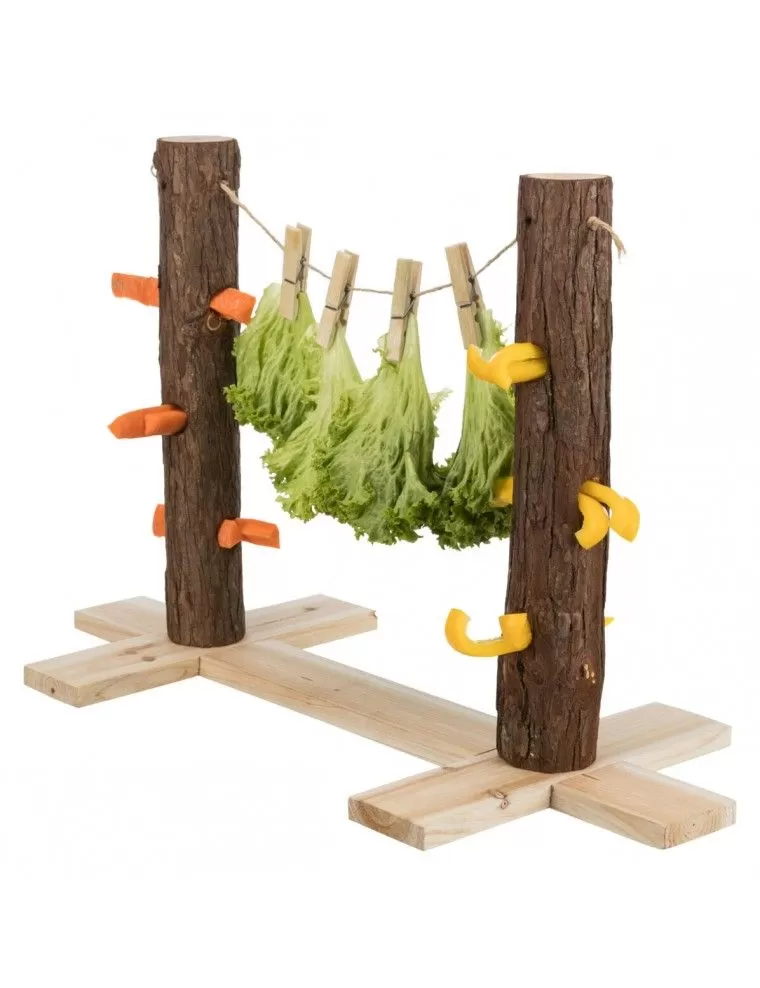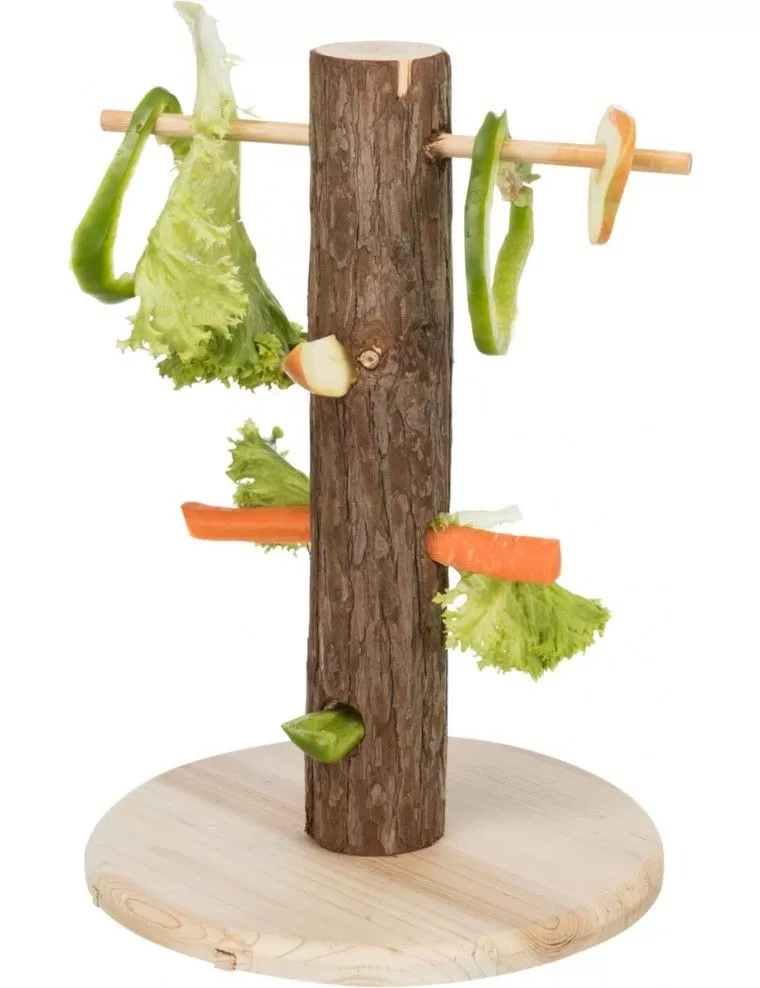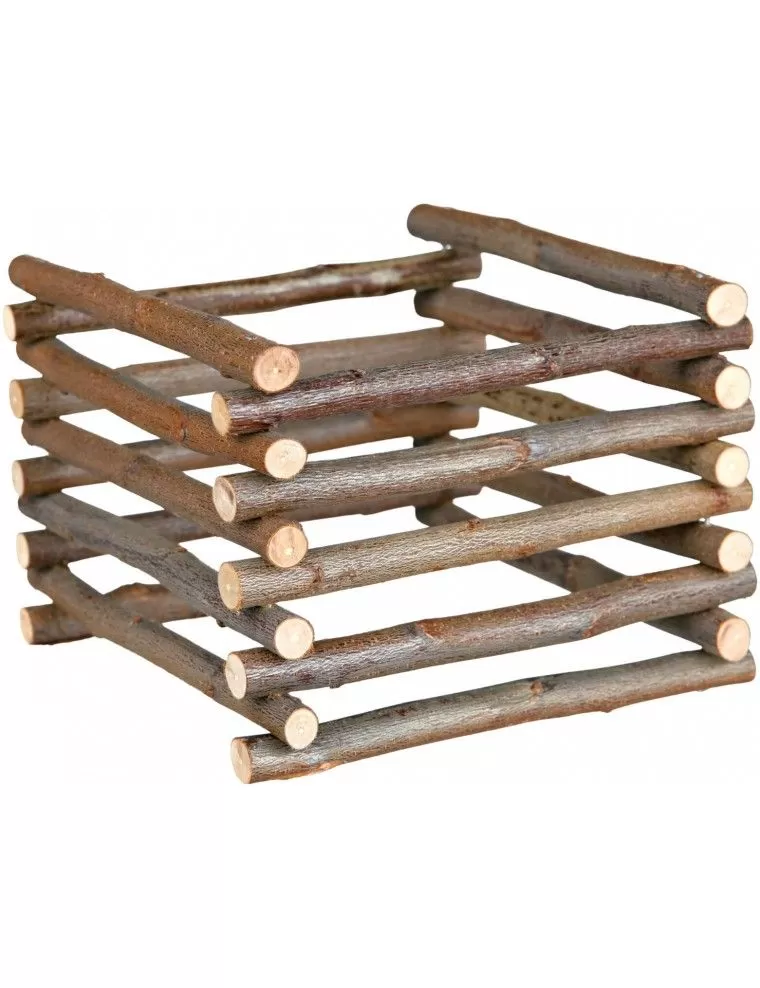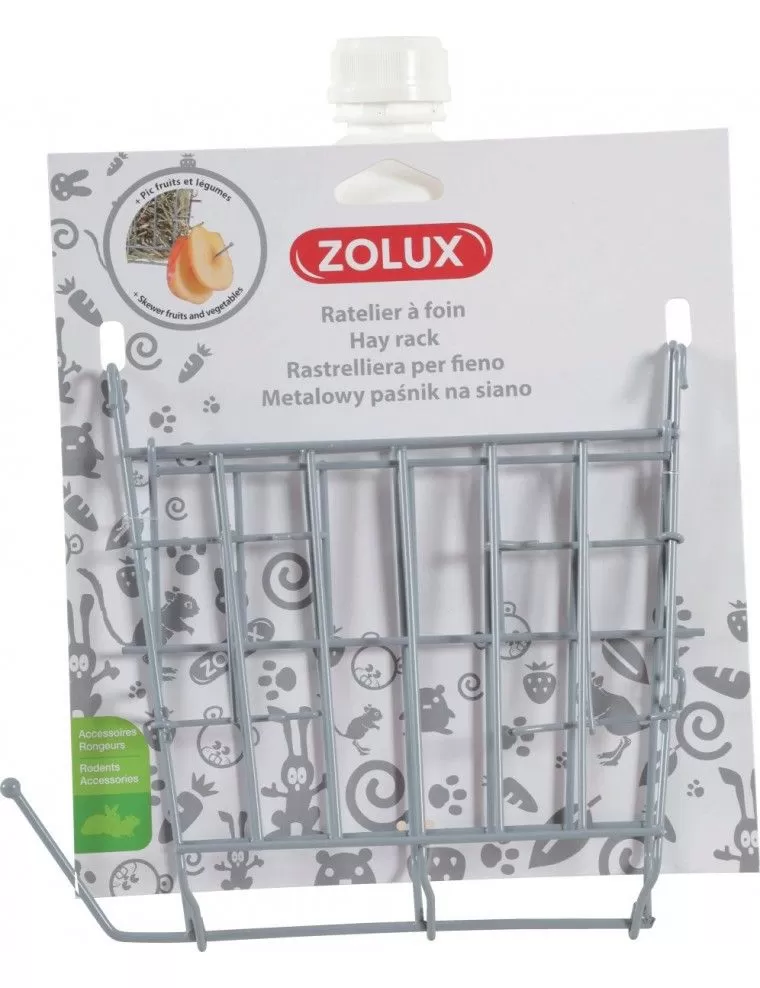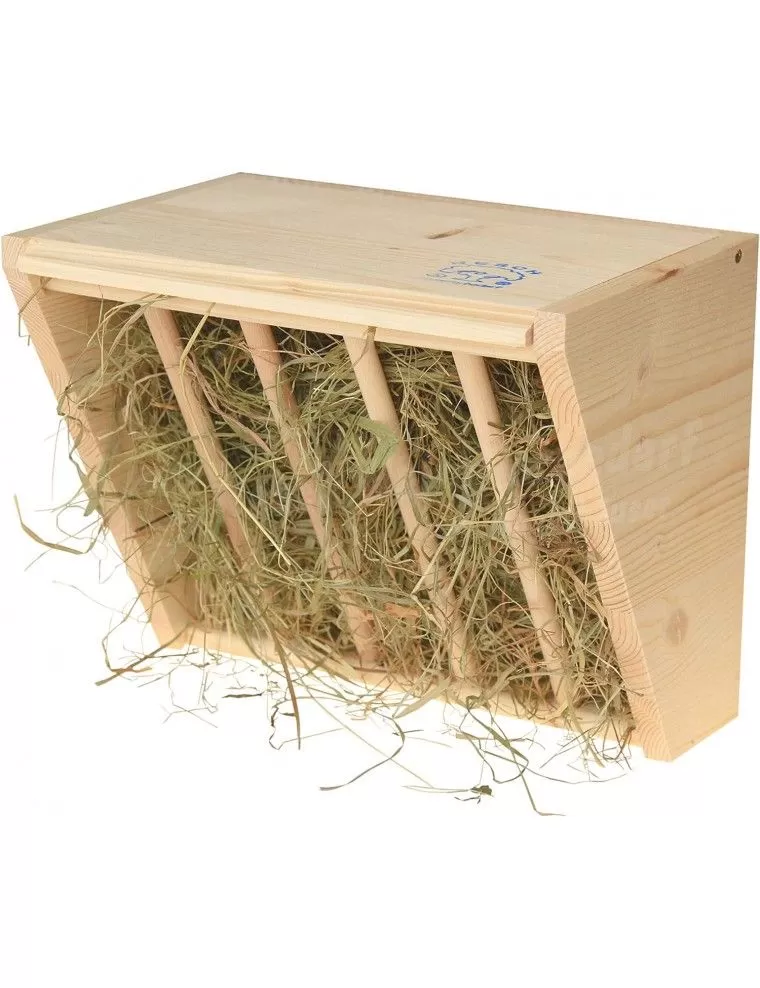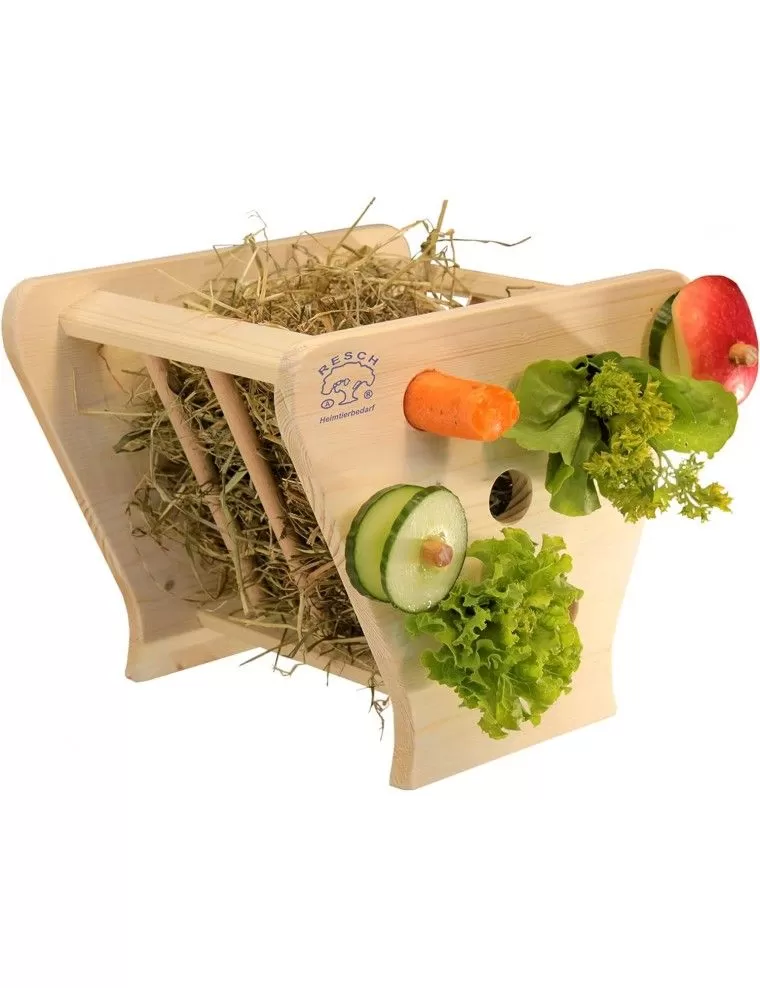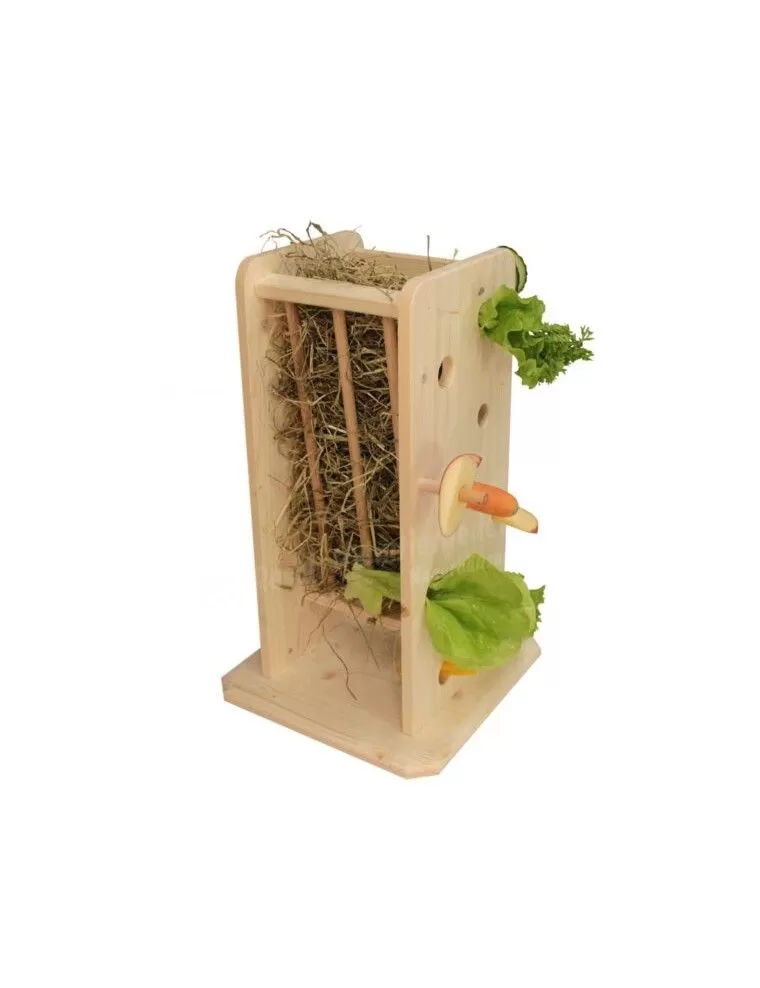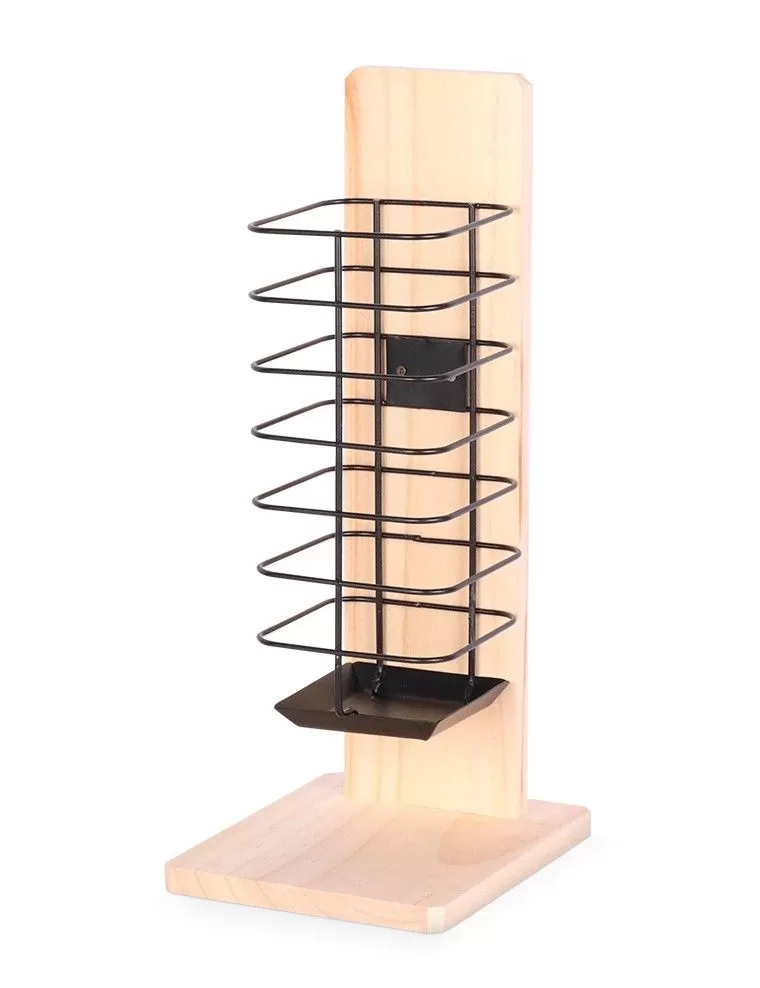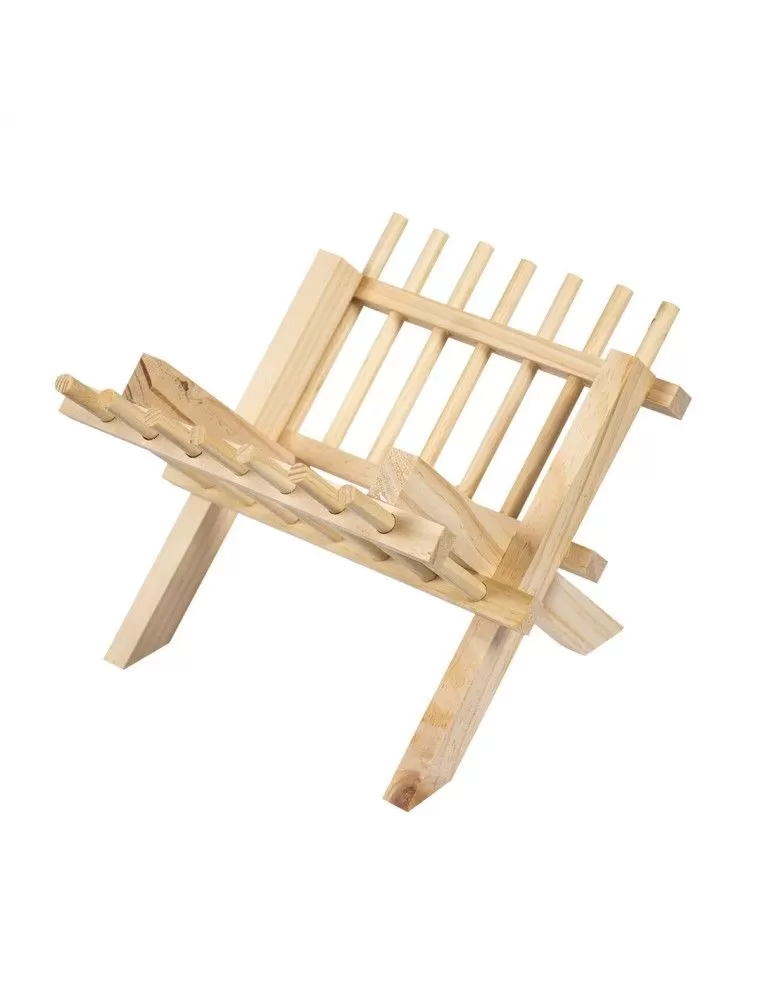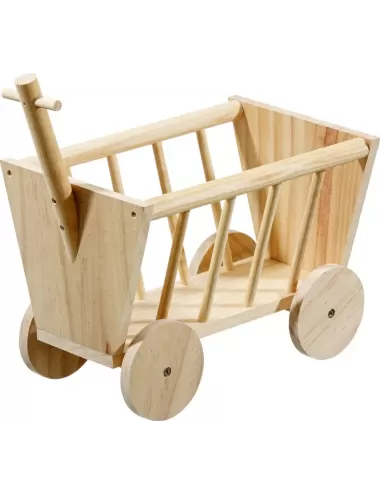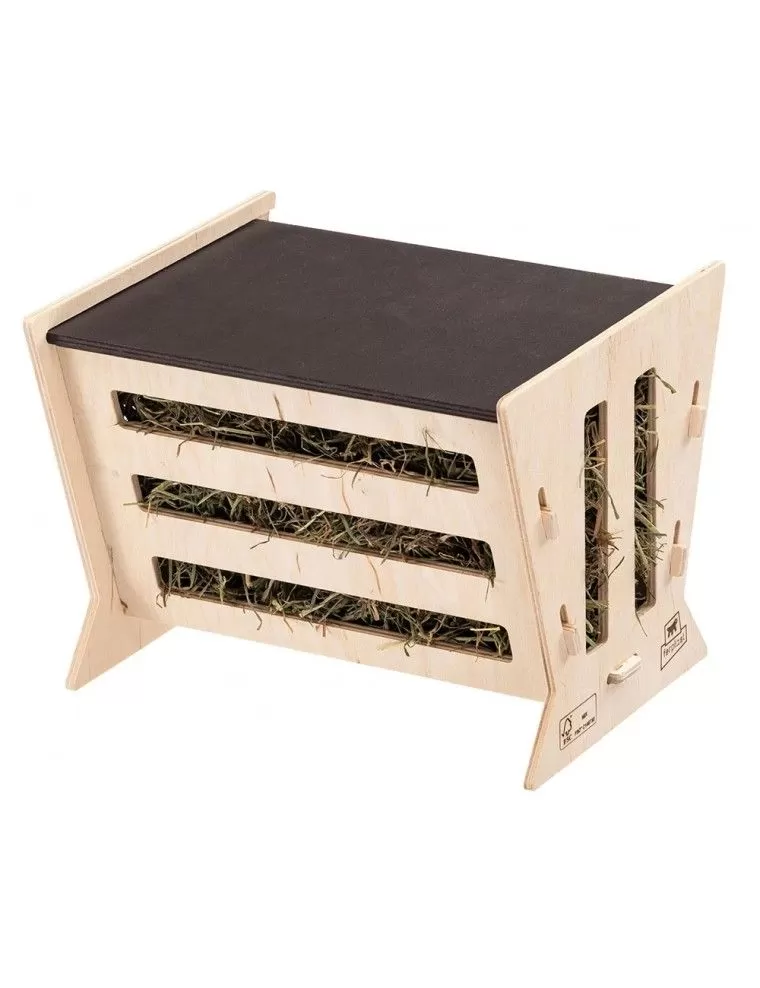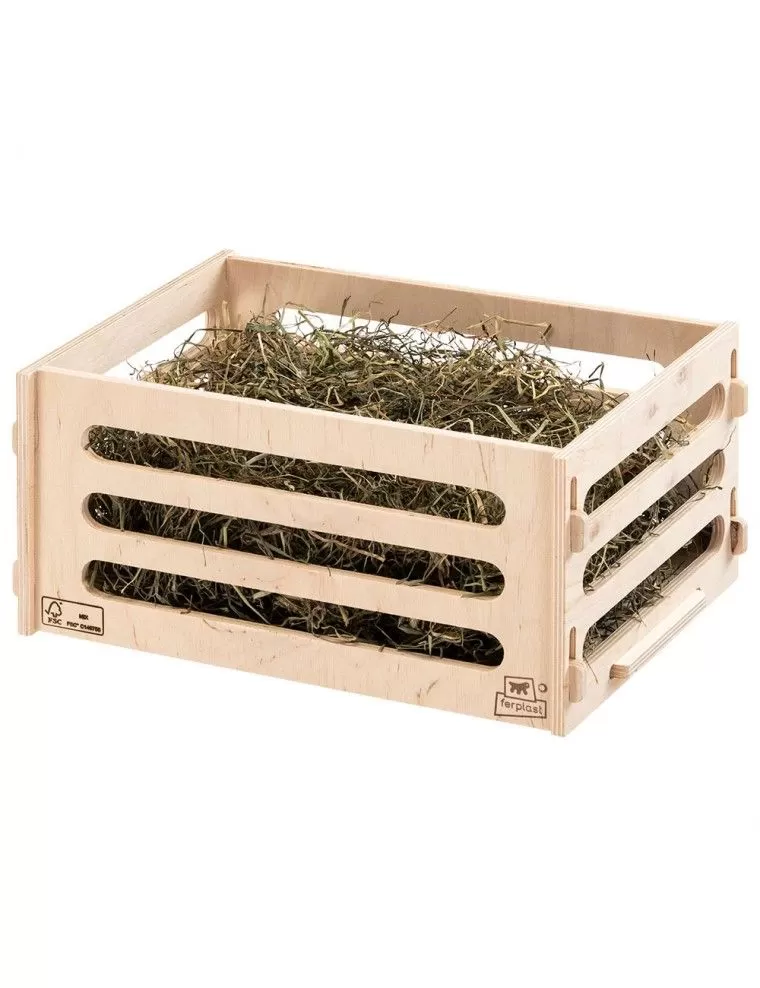- 1 in stock
Rack Octodon
Hay Racks: Essential for the Well-being of Degus
At Le Petit Rongeur, we know that hay plays a crucial role in the diet and well-being of degus. That's why we offer a diverse selection of hay racks, designed to keep the enclosure tidy while keeping the hay clean and accessible. Our racks, available from trusted brands such as Resch Nagerhaus , Ferplast , and Trixie , offer a convenient and hygienic solution for providing your degus with their essential fiber diet.
Choosing the Right Rack for Your Octodon
The importance of choosing a suitable rack should not be underestimated. Our models vary between those which can be suspended from the bars of the cage and those which are placed on the ground, thus offering flexibility depending on the layout of your degu's living space. To further stimulate your little companions, consider placing several racks throughout the enclosure, giving them more choices and opportunities to interact with their environment.
Sustainability at the Heart of Our Selections
Although wooden racks have a natural aesthetic appearance and are very popular, their vulnerability to gnawing can pose a problem. This is why Le Petit Rongeur also provides hay racks made of materials resistant to rodents, such as aluminum or metal, thus guaranteeing increased durability against the attacks of small teeth. These sturdy alternatives ensure that hay remains clean and safe to consume, while providing an additional and entertaining challenge for your degus.
An Essential Accessory for Feeding Degus
The hay rack is not just a simple accessory; it is an essential component of the daily management of your degu's diet. By keeping hay dry, clean, and away from waste, it contributes to a healthy diet and good digestion, while helping with the natural wear of teeth. At Le Petit Rongeur, we are committed to offering solutions that improve the quality of life of your degus, by focusing on the functionality, durability, and design of our hay racks.
Rack
Hay Racks: Essential for the Well-being of Degus
At Le Petit Rongeur, we know that hay plays a crucial role in the diet and well-being of degus. That's why we offer a diverse selection of hay racks, designed to keep the enclosure tidy while keeping the hay clean and accessible. Our racks, available from trusted brands such as Resch Nagerhaus , Ferplast , and Trixie , offer a convenient and hygienic solution for providing your degus with their essential fiber diet.
Choosing the Right Rack for Your Octodon
The importance of choosing a suitable rack should not be underestimated. Our models vary between those which can be suspended from the bars of the cage and those which are placed on the ground, thus offering flexibility depending on the layout of your degu's living space. To further stimulate your little companions, consider placing several racks throughout the enclosure, giving them more choices and opportunities to interact with their environment.
Sustainability at the Heart of Our Selections
Although wooden racks have a natural aesthetic appearance and are very popular, their vulnerability to gnawing can pose a problem. This is why Le Petit Rongeur also provides hay racks made of materials resistant to rodents, such as aluminum or metal, thus guaranteeing increased durability against the attacks of small teeth. These sturdy alternatives ensure that hay remains clean and safe to consume, while providing an additional and entertaining challenge for your degus.
An Essential Accessory for Feeding Degus
The hay rack is not just a simple accessory; it is an essential component of the daily management of your degu's diet. By keeping hay dry, clean, and away from waste, it contributes to a healthy diet and good digestion, while helping with the natural wear of teeth. At Le Petit Rongeur, we are committed to offering solutions that improve the quality of life of your degus, by focusing on the functionality, durability, and design of our hay racks.
- 6 in stock
- 2 in stock
- in replenishment
- 1 in stock
- 3 in stock
- 1 in stock
- 2 in stock
- 1 in stock
- 2 in stock
- 1 in stock
- 3 in stock
- in replenishment
- 4 in stock
- 2 in stock
- 2 in stock
- 2 in stock
- 3 in stock
- in replenishment
- 2 in stock
- 1 in stock
- in replenishment
- in replenishment
Questions / Réponses
Un râtelier sert à contenir le foin de manière hygiénique et accessible pour l'octodon. Il empêche le foin de se disperser dans la cage, réduisant ainsi le gaspillage et maintenant la propreté de l'habitat. En fournissant le foin dans un râtelier, vous encouragez également l'octodon à adopter une posture d'alimentation naturelle, favorisant ainsi une bonne usure dentaire et une digestion saine.
Choisissez un râtelier en métal ou en matériau résistant que l'octodon ne peut pas ronger ni détruire facilement. Le râtelier doit être facile à fixer aux barreaux de la cage et situé à une hauteur accessible pour l'octodon. Assurez-vous qu'il est suffisamment grand pour contenir une quantité adéquate de foin mais pas trop large pour éviter que l'octodon n'entre dedans ou ne s'y coince.
Placez le râtelier dans un coin de la cage où il n'interfère pas avec les autres activités de l'octodon, comme le sommeil ou l'exercice. Il devrait être fixé à une hauteur qui permet à l'octodon de manger confortablement tout en restant debout sur ses pattes arrière ou en s'étirant un peu, ce qui favorise une posture saine.
Il est tout à fait possible de fabriquer un râtelier maison pour octodons en utilisant des matériaux sûrs comme le métal ou le bois non traité. Assurez-vous que la conception ne présente pas de risques de blessure, avec des bords lisses et aucun petit espace où l'octodon pourrait se coincer. Cependant, pour des raisons de sécurité et de praticité, les râteliers commerciaux spécialement conçus pour les petits animaux sont souvent préférables.
Nettoyez régulièrement le râtelier de l'octodon en le retirant de la cage et en éliminant tous les résidus de foin et débris. Lavez-le avec de l'eau chaude savonneuse et une brosse pour enlever toute saleté. Rincez bien et séchez complètement avant de le remettre dans la cage. Un nettoyage fréquent prévient l'accumulation de moisissures et de bactéries.
Remplissez le râtelier de votre octodon avec du foin frais chaque jour pour assurer une alimentation continue en fibres. Retirez le foin ancien ou souillé pour maintenir la fraîcheur et l'appétit de l'octodon. Une alimentation constante en foin frais favorise la santé digestive et prévient l'ennui.
Les râteliers sont généralement sûrs pour les octodons, à condition qu'ils soient bien conçus et correctement installés. Évitez les râteliers avec des parties pointues ou des espaces où l'octodon pourrait se coincer ou se blesser. Surveillez l'interaction de votre octodon avec le râtelier les premiers jours pour vous assurer qu'il l'utilise sans risque.
Si votre octodon ignore le râtelier, essayez de le placer à un autre endroit dans la cage ou d'utiliser un modèle différent qui pourrait être plus attrayant ou accessible pour lui. Certains octodons peuvent préférer manger à même le sol au début. Vous pouvez encourager l'utilisation du râtelier en plaçant des friandises saines ou des morceaux de légumes frais à proximité pour attirer leur attention.
